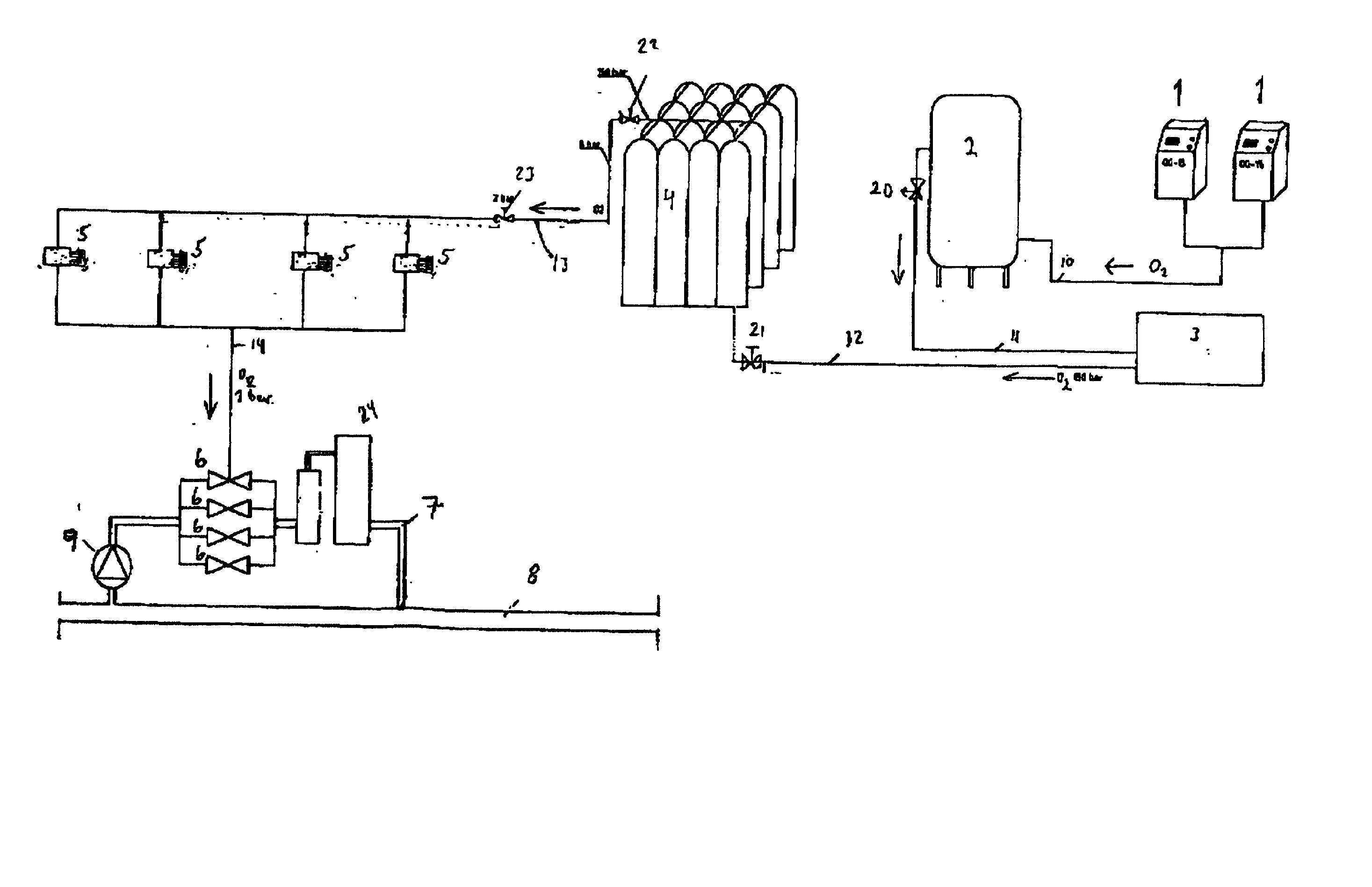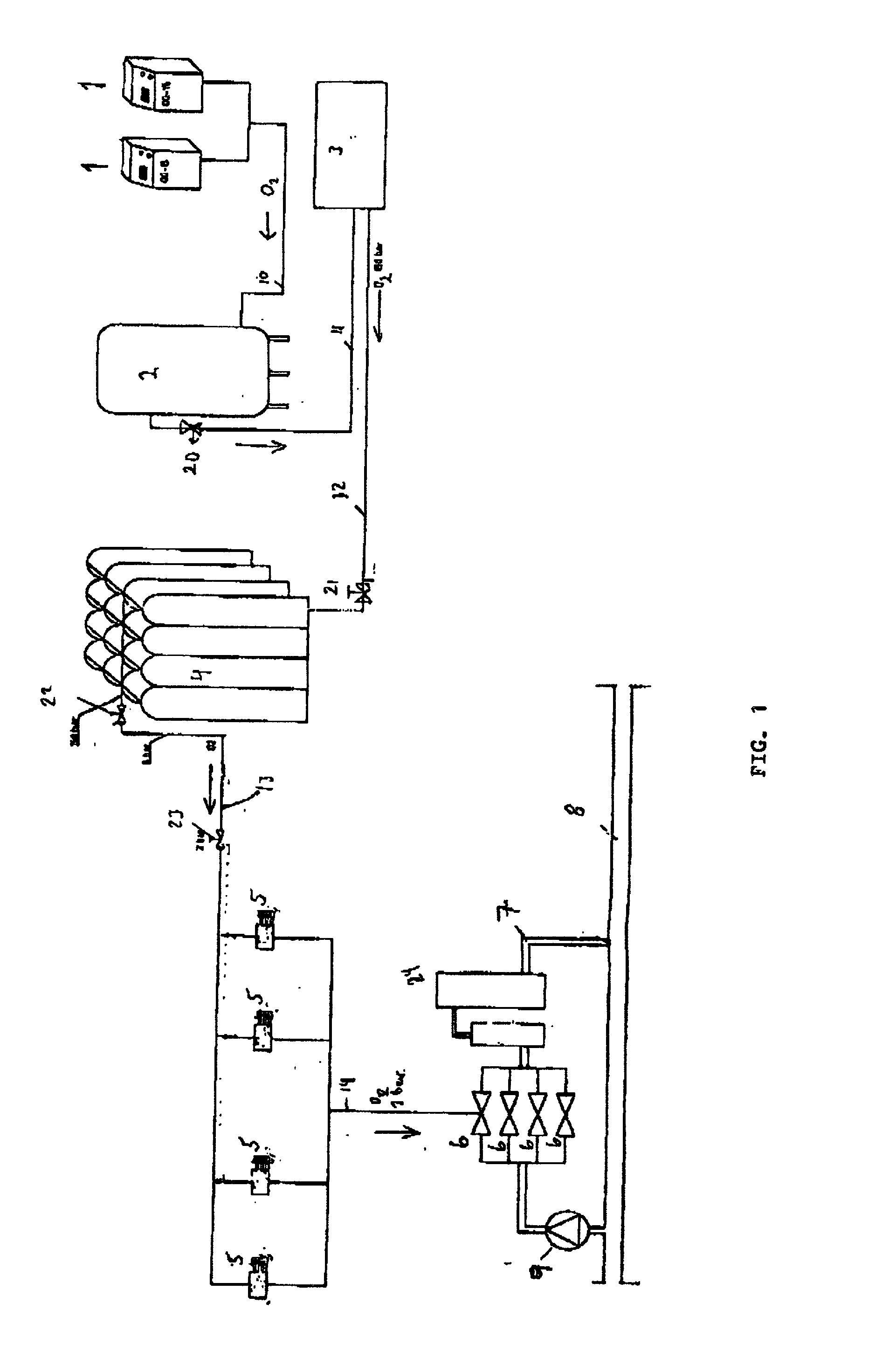Method and apparatus for treating/disinfecting ballast water in ships
- Summary
- Abstract
- Description
- Claims
- Application Information
AI Technical Summary
Benefits of technology
Problems solved by technology
Method used
Image
Examples
example 2
A Second Preferred Embodiment for Implementation in Existing Ship Designs
[0050] In this preferred embodiment, the by-pass line 7 of the inlet pipe for ballast water is omitted and the venturi injectors 6 are placed directly into the supply pipe 8. Otherwise, the embodiment is exactly as given in example 1.
example 3
A Third Preferred Embodiment for Implementation in Existing as Well as Future Ship Designs
[0051] In this preferred embodiment, the embodiments as given in example 1 or 2 are equipped with a centrifugal hydrocyclone at the inlet pipe 8 up-streams of the venturi injector(s) 6 for separating out sediments from the incoming ballast water. The cyclone employs the g-force vortex separation principle to separate entrained solid matter such as sediments, larger organic life forms, etc. An example of a suitable cyclone is given in FIG. 2. Such cyclones are known from the oil industry and should be placed at the ships intake of ballast water such that the sediments are returned back to the water. When the sediments are eliminated in the ballast tanks, the kill rate from the ozone treatment is expected to be increased, such that this embodiment is expected to give satisfactory kill rates to be accepted for most coming regional and international regulations on disposal of ballast water in coast...
example 4
A Fourth Preferred Embodiment for Implementation in Existing as Well as Future Ship Designs
[0052] In this preferred embodiment, the combination of hydrocyclone, ballast water exchange and ozone treatment is envisioned, e.g. by equipping the inlet pipe for ballast water with a cyclone at the ship's intake and a venturi injector for ozone downstream of the cyclone. This combination will achieve an optimum disinfection degree if the ballast water that is loaded at the departing harbour is treated with ozone and then subject to an open ocean exchange. In this case, the cyclone will eliminate build up of sediments in the ballast water tanks thus eliminating refugee zones for organisms, the ozone injection will effectively kill almost all micro-organisms and smaller organic life forms, and the saline deep sea water will kill the remaining organisms including larger life forms that were able to survive the ozone treatment. Thus the kill rate of organisms collected at the departing harbour ...
PUM
| Property | Measurement | Unit |
|---|---|---|
| Weight | aaaaa | aaaaa |
| Density | aaaaa | aaaaa |
| Density | aaaaa | aaaaa |
Abstract
Description
Claims
Application Information
 Login to View More
Login to View More - R&D
- Intellectual Property
- Life Sciences
- Materials
- Tech Scout
- Unparalleled Data Quality
- Higher Quality Content
- 60% Fewer Hallucinations
Browse by: Latest US Patents, China's latest patents, Technical Efficacy Thesaurus, Application Domain, Technology Topic, Popular Technical Reports.
© 2025 PatSnap. All rights reserved.Legal|Privacy policy|Modern Slavery Act Transparency Statement|Sitemap|About US| Contact US: help@patsnap.com


